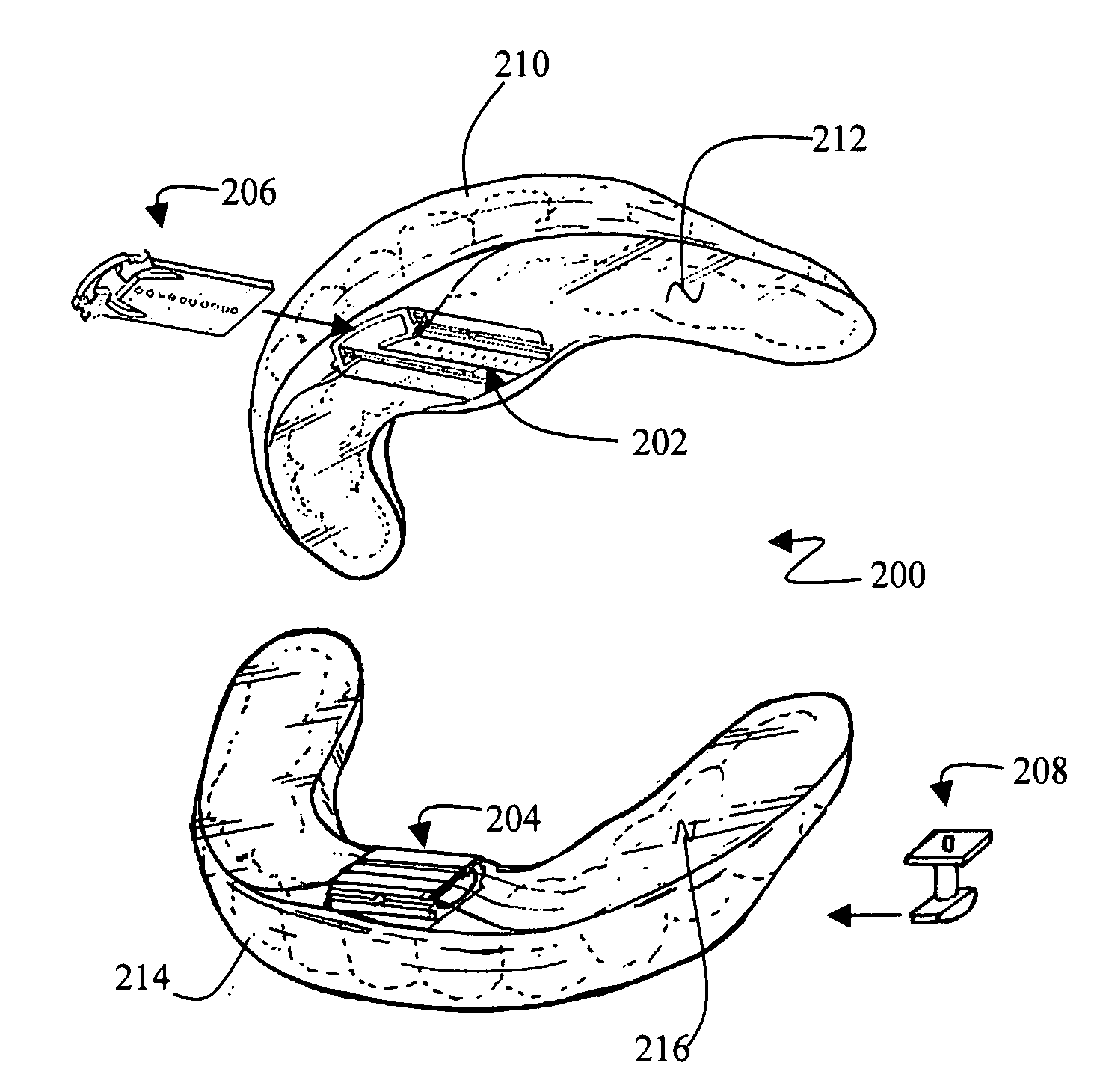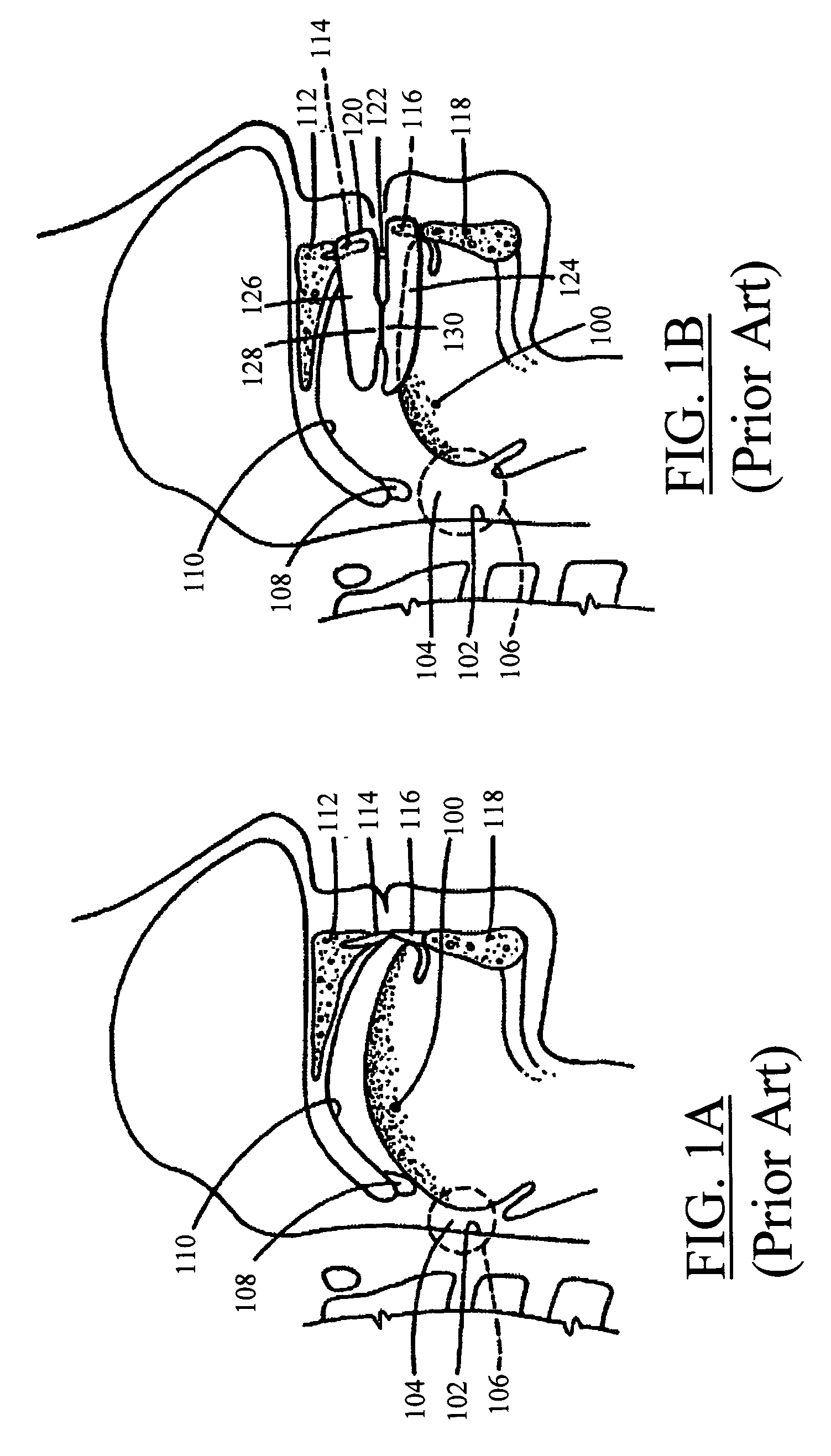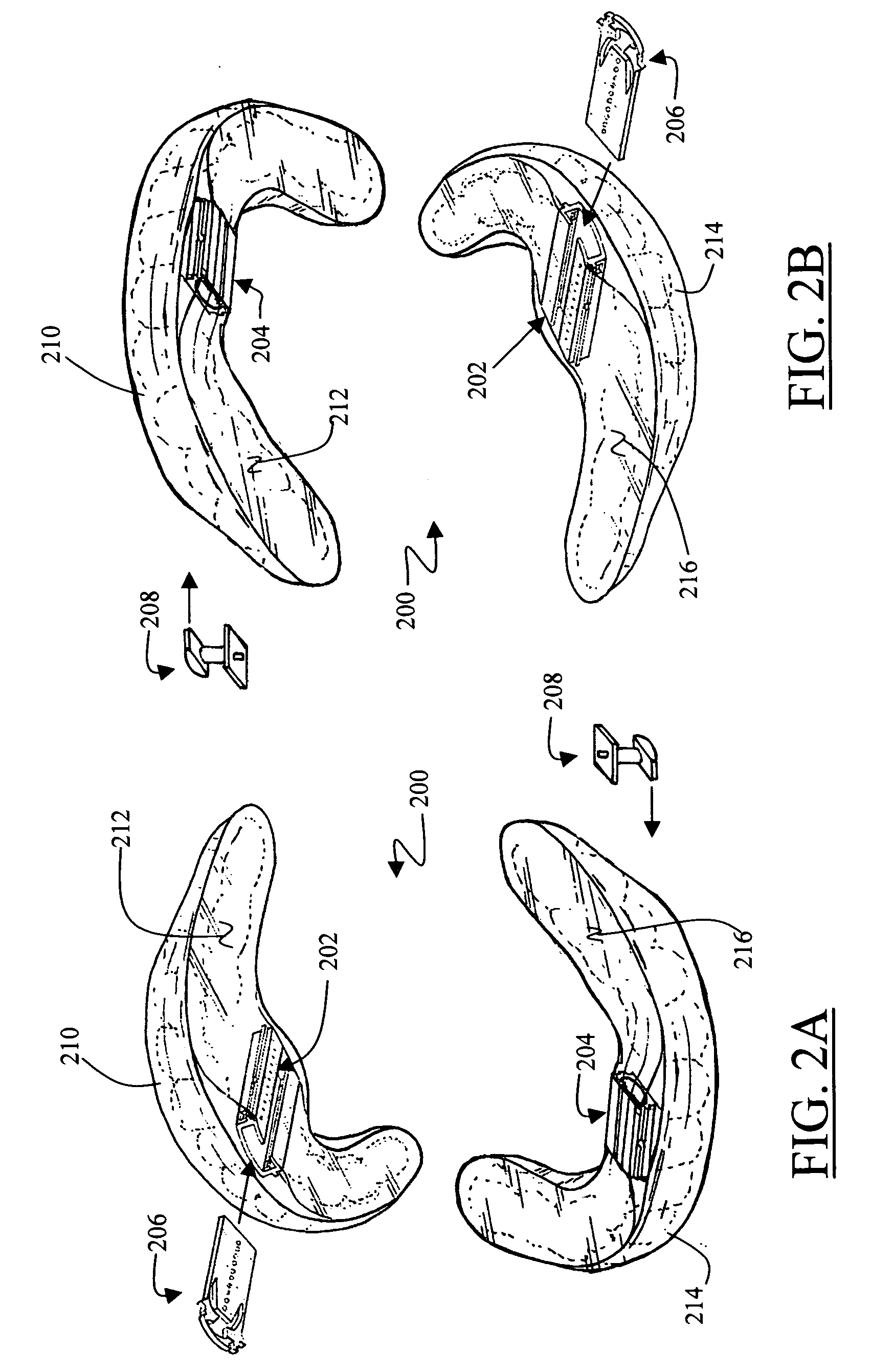Apparatus and method for caring for obstructive sleep disorder breathing
- Summary
- Abstract
- Description
- Claims
- Application Information
AI Technical Summary
Benefits of technology
Problems solved by technology
Method used
Image
Examples
Embodiment Construction
(1) Introduction
[0091] Most conventional connection mechanisms for intra-oral appliances are comprised of numerous, complex parts that require a professional to assemble and adjust. The present invention provides a simple, adjustable connection mechanism comprised of only four components that are easily assembled, and may be adjusted and used without the need for special tools or professionals.
[0092] Before providing details regarding the various aspects of the invention, first an overview of the present invention is provided, which describes the interconnections and operation of various major components in order to provide a more tangible understanding thereof without getting lost in the details. Next, an explicatory section is provided in which the various major components presented in the overview are described in detail.
(2) Overview
[0093]FIG. 2A illustrates a general overview of an intra-oral appliance in accordance with the present invention, including an adjustable conne...
PUM
 Login to View More
Login to View More Abstract
Description
Claims
Application Information
 Login to View More
Login to View More - R&D
- Intellectual Property
- Life Sciences
- Materials
- Tech Scout
- Unparalleled Data Quality
- Higher Quality Content
- 60% Fewer Hallucinations
Browse by: Latest US Patents, China's latest patents, Technical Efficacy Thesaurus, Application Domain, Technology Topic, Popular Technical Reports.
© 2025 PatSnap. All rights reserved.Legal|Privacy policy|Modern Slavery Act Transparency Statement|Sitemap|About US| Contact US: help@patsnap.com



